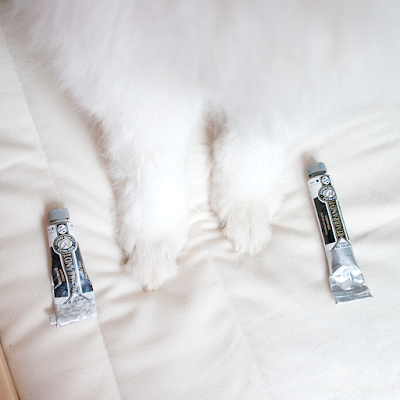There are 3 main types of white:
Titanium white
Known for being bright white, opaque, has a high tinting strength. Can be difficult in color mixing, because you can add too much too fast and make the paint look chalky or pastel. Perfect for direct painting.
Zinc White
Very transparent, has 1/10th the tinting strength of Titanium White. Gives you more control than Titanium. Also, it's slow drying and has a "bluish" (cold) tone.
Lead White (also called Flake White)
Is the most common white found on the old masters' palette. It’s opaque, flexible and quick-drying. Also, it can be applied more heavily than other whites with less danger of cracking. Flake white is a "warm" white.! Being composed of lead, Flake white is poisonous if absorbed into the body.
Extra read:
Zinc white is considered cooler than Titanium. Also, some artists think that Titanium white makes the paint "chalky" or dull. Josh from Too Much White Paper made a study that clearly shows the difference (or no difference) of whites in tints.You can find it here - Zinc White vs Titanium White in Tints
A small article "Will Lead White Soon be Unavailable?" by Natural Pigments will explain the situation in a Flake White production.
An incredibly interesting comparison of yellowing of different whites throughout the years by Jonathan Linton - The White Test. . . 5 Years in the Making


No comments:
Post a Comment